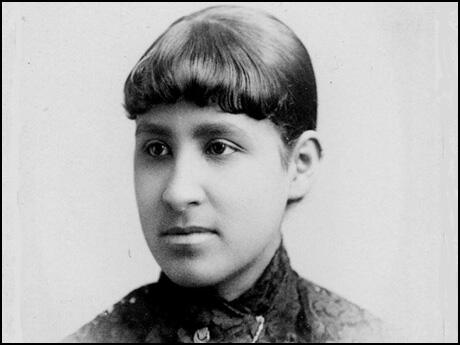On this day on 24th July
On this day on 1567 Mary, Queen of Scots, is forced to abdicate. Twenty-six Scottish peers, turned against Mary and James Hepburn, 4th Earl of Bothwell, raising an army against them. Mary and Bothwell confronted the lords at Carberry Hill on 15th June, 1567. Clearly outnumbered, Mary and Bothwell surrendered. Bothwell was driven into exile and Mary was imprisoned in Lochleven Castle. While in captivity Mary miscarried twins. Her captors discussed several options: "conditional restoration; enforced abdication and exile; enforced abdication, trial for murder, and life imprisonment; enforced abdication, trial for murder, and execution". On 24th July she was presented with deeds of abdication, telling her that she would be killed if she did not sign. She eventually agreed to abdicate in favour of her one-year-old son James. Mary's illegitimate half-brother, James Stewart, 1st Earl of Moray, was made regent.
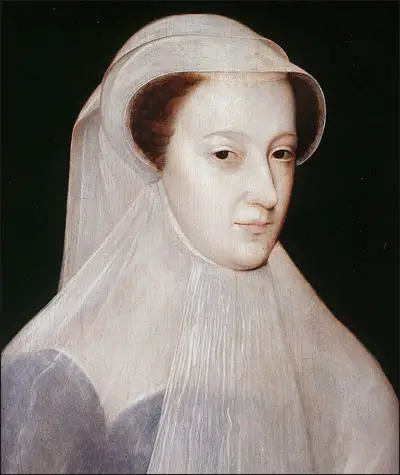
On this day on 1864 German playwright Frank Wedekind, the second of the six children born to Friedrich Wilhelm Wedekind, a physician, and Emilie Kammerer, a German singer and actress, was born in Hanover. The family moved to Lenzburg in Switzerland, where his father had purchased a castle.
In 1884 Wedekind entered the University of Lausanne, and then moved to the University of Munich. He studied law and literature, but abandoned his studies and took a job as a publicity agent for the Swiss soup company Maggi.
Wedekind eventually returned to Munich where he attempted to make a living from acting. Wedekind also wrote plays and in 1891 he produced Spring Awakening. The sexual content of the play created great controversy and was immediately banned in Germany due to its frank portrayal of abortion, homosexuality, rape, child abuse and suicide. According to the authors of the The Concise Oxford Companion to the Theatre: "The play harks back to Büchner in its staccato structure and intensified realism, but looks forward to Expressionism and Symbolism in its grave-yard and schoolroom scenes in which it analyses the situation of two 14-year-old lovers who pay with their lives for the moral dishonesty of their tyrannical parents."
Dennis Kennedy has added: "Containing scenes of homosexual love, masturbation, and flagellation, the piece is a disturbing condemnation of how an oppressive society deals with puberty. Its provocative content, episodic structure, abrupt language, and two-dimensional and symbolic characters, like the Man-in-the-Mask played at its première by the author, all anticipate expressionism."
In 1896 Albert Langen, the son of a Rhineland industrialist, started the left-wing journal, Simplicissimus. Wedekind was an early contributor to the journal. Others writers and artists involved in the project included Thomas Heine, Thomas Mann, Rainer Maria Rilke, Olaf Gulbransson, Rudolf Wilke, Walter Trier and Edward Thony. The journal constantly attacked the German establishment. One right-wing journal in Germany, Augsburger Postzeitung, complained about the influence that it was having on young students and called for it to be banned as is was creating a "real danger to school discipline".
Wedekind's next play, Earth Spirit, was produced in Leipzig on 25th February 1898. This was the first of his "Lulu plays", which have as their central figure Lulu, a purely sexual creature who drives men to ruin. According to one critic: "Finally she meets her nemesis by being murdered by Jack the Ripper, one creature of instinct destroyed by another." Wedekind admitted that "she was created to stir up great disaster. "
Later that year Kaiser Wilhelm II objected to an article by Wedekind and a cartoon by Thomas Heine that appeared in the journal during his visit to Palestine. The issue was confiscated and a lawsuit was brought against Wedekind, Heine and the publisher, Albert Langen. Following the advice of his lawyer, Langen fled to Switzerland and remained in exile for five years. Both Wedekind (seven months) and Heine (six months) were imprisoned in the fortress of Köningstein for their attack on the German monarchy.
Wedekind developed a reputation for promiscuous behaviour and had an affair with Frida Uhl, the former wife of August Strindberg. She eventually gave birth to his child. He mixed with a group of bohemian artists and political activists including Erich Mühsam, who was a strong advocate of free love.
On the stage Wedekind often collaborated with the young Austrian actress Tilly Newes. They acted together in the second of his Lulu plays, Pandora's Box, in Vienna, at a private performance in 1905. Tilly played Lulu and Wedekind took the role of Jack the Ripper. The writer Karl Kraus played Kung Poti.
It has been argued that Wedekind "deliberately sought to outrage bourgeois society" and that he reflected the "perceived threat of powerful women" current at the time. In 1906, Wedekind married Newes, 22 years his junior. He rejected his previous promiscuous behaviour and became intensely jealous of his young wife.
The theatre critic, John Simon, has pointed out: "Wedekind acted in his plays and performed his cabaret songs with a quirky but insidious individuality, and championed freedom of expression, women's rights, anti-anti-Semitism and other worthy causes. His drama was the fountainhead of not just one form of German modernism, but of all three movements that superseded naturalism: Symbolism, Expressionism and that tertium quid whose creator, Bertolt Brecht, acknowledged him as his master."
Frank Wedekind died from complications during surgery in Munich on 9th March, 1918.
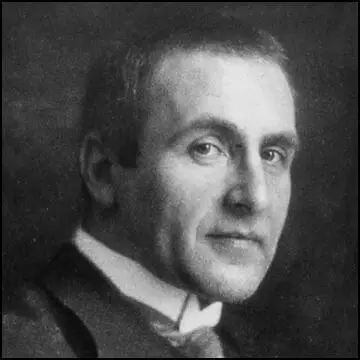
On this day on 1895 Robert Graves, the son of Alfred Graves, an inspector of schools, and Amalie von Ranke, was born at Red Branch House, Lauriston Road, Wimbledon. His father was also the editor of an Irish literary magazine and a published poet.
At thirteen Graves was sent to Charterhouse public school where he was bullied. Graves later wrote how "the legend was put about that I was not only German but a German-Jew." He also became close to a much younger boy, Peter Johnstone: "In English preparatory and public schools romance is necessarily homosexual. The opposite sex is despised and treated as something obscene. Many boys never recover from this perversion. For every one born homosexual, at least ten permanent pseudo-homosexuals are made by the public school system: nine of these ten as honourably chaste and sentimental as I was."
Graves developed a good relationship with George Mallory, encouraging his interest in poetry and mountaineering. Graves later recalled: "He (Mallory) was wasted at Charterhouse. He tried to treat his class in a friendly way, which puzzled and offended them." Richard Perceval Graves added: "Graves's earliest Carthusian verse, though technically imperfect, is highly forceful, reflecting as it does the desperately overwrought condition into which he had been plunged by the assiduous bullying of those who resented him, chiefly because he was trying to live up to the high moral standards of his home. Under the protective tutelage of George Mallory, with whom he went rock-climbing, poetry became not merely an escape, but a positive pleasure."
Graves won a classical exhibition at St John's College. Although a convinced pacifist, Graves was so shocked by the German invasion of Belgium on 4th August 1914, that joining up seemed to him the only honourable course of action. Granted a commission in the Royal Welch Fusiliers, Captain Graves served on the Western Front where he met the poet, Siegfried Sassoon, and the two men became close friends and discussed the possibility of living together after the war.
Robert Graves was traumatized by his experiences in the First World War. Later he recorded the death of a popular officer: "Sampson lay groaning about twenty yards beyond the front trench. Several attempts were made to rescue him. He was badly hit. Three men got killed in these attempts: two officers and two men, wounded. In the end his own orderly managed to crawl out to him. Sampson waved him back, saying he was riddled through and not worth rescuing; he sent his apologies to the company for making such a noise. At dusk we all went out to get the wounded, leaving only sentries in the line. The first dead body I came across was Sampson. He had been hit in seventeen places. I found that he had forced his knuckles into his mouth to stop himself crying out and attracting any more men to their death."
Like many young officers, Graves believed that the only way to survive the war was to get wounded: "I went on patrol fairly often, finding that the only thing respected in young officers was personal courage. Besides, I had cannily worked it out like this. My best way of lasting through to the end of the war would be to get wounded. The best time to get wounded would be at night and in the open, with rifle fire more or less unaimed and my whole body exposed. Best, also, to get wounded when there was no rush on the dressing-station services, and while the back areas were not being heavily shelled. Best to get wounded, therefore, on a night patrol in a quiet sector. One could usually manage to crawl into a shell hole until help arrived."
In July 1916 he was seriously wounded when shrapnel from an exploding shell pierced his chest and thigh. The army mistakenly informed Alfred Graves that his son had been killed and even forwarded the family his personal belongings. His obituary was published in The Times before it was realised that he was still alive. After recovering from his wounds he returned to the front-line. During this period he published two collections of poetry, Over the Brazier (1916) and Fairies and Fusiliers (1917).
In 1917 Robert Graves was hospitalized with shell-shock. While on leave he met up with Siegfried Sassoon who was also recovering from wounds suffered in France. Sassoon, like Graves, had grown increasingly angry about the tactics being employed by the British Army and after a meeting with Bertrand Russell, John Murry Middleton and H. W. Massingham, he wrote Finished With War: A Soldier's Declaration, which announced that "I am making this statement as an act of wilful defiance of military authority because I believe that the war is being deliberately prolonged by those who have the power to end it. I am a soldier, convinced that I am acting on behalf of soldiers. I believe that the war upon which I entered as a war of defence and liberation has now become a war of aggression and conquest. I believe that the purposes for which I and my fellow soldiers entered upon this war should have been so clearly stated as to have made it impossible to change them and that had this been done the objects which actuated us would now be attainable by negotiation." In July 1917 Sassoon arranged for a sympathetic Labour Party MP to read out the statement in the House of Commons. Instead of the expected court martial, the under-secretary for war declared him to be suffering from shell-shock, and he was sent to Craiglockhart War Hospital, near Edinburgh.
While he was on leave he fell in love with Nancy Nicholson, the sister of the artist Ben Nicholson. They were married on 23rd January 1918; and after Graves's demobilization they moved into Dingle Cottage in the garden of John Masefield on Boars Hill near Oxford. Over the next five years Nancy gave birth to four children. Graves studied English literature at St John's College during this period. Graves continued to write poetry but was severly distressed by the poor reception given in 1920 to Country Sentiment.
In 1925 Graves was appointed professor of English literature at Cairo University. He set sail for Egypt in January 1926 not only with his wife and family but also with the young American poet Laura Riding. Together they would write the ground-breaking Survey of Modernist Poetry (1927) and helped him prepare his Poems: 1914-26 (1927). Richard Perceval Graves has argued: "After a bizarre period during which the ménage à trois between Robert Graves, Nancy, and Laura became a ménage à quatre with the Irish poet Geoffrey Phibbs (a period which ended only when Laura attempted suicide by hurling herself from the window of 35A St Peter's Square, London), Laura rescued Graves both from his failing marriage and from the moral censure of his wider family. She also acted as intellectual and spiritual midwife."
Riding also encouraged Graves to write his memoirs of the First World War. The book, Goodbye to All That, was published to critical acclaim in 1929. Later that year Graves and Laura moved to Deyá, Majorca, where they lived and worked together. With the help of Riding he wrote two extremely successful historical novels, I Claudius (1934) and Claudius the God (1934). This period also saw the publication of two more collections of poems: Poems: 1926-1930 (1931) and Collected Poems (1938).
In 1939 Laura Riding left Graves for Schuyler Jackson. Graves returned to England alone, and was saved from a mental breakdown only by the love of Beryl Hodge and the wife of Alan Hodge. Beryl, who had long admired Robert, became his new muse and mistress and in 1940 they set up house in Devon, where they stayed during the Second World War. Over the next few years he published a large number of works including The Story of Mary Powell (1943), The Golden Fleece (1945) and King Jesus (1946).
In 1946 Graves moved to Mallorca where he wrote The Greek Myths (1955), The Crowning Privilege (1955) and The Hebrew Myths (1964), Between 1961 and 1966 Graves was Professor of Poetry at Oxford University. He was also offered the CBE, which he declined as he did not agree with the British honours system.
Robert Graves died in Deya on 7th December 1985.
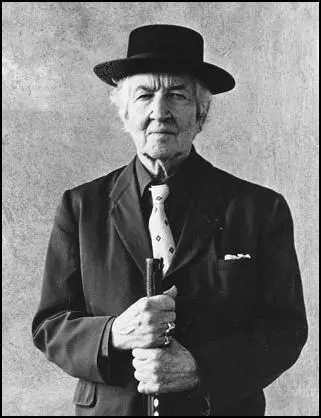
On this day on 1920 politician Bella Abzug was born in New York City. After attending local public schools she obtained a degree from the Columbia University Law School in 1945.
Admitted to the New York Bar in 1947, Abzug concentrated on trade union and civil rights cases. This included the Willie McGee case. McGee, a 36-year-old black truck driver from Laurel, Mississippi, was convicted of raping a white woman despite evidence that the couple had been having a relationship for four years. The trial lasted less than a day and the jury took under three minutes to reach a verdict and the judge sentenced McGee to be executed. Abzug argued that no white man had ever been condemned to death for rape in the deep South, while over the last forty years 51 blacks had been executed for this offence.
Despite a nationwide campaign led by the American Communist Party McGee was executed on 8th May 1951. It was claimed by James Cogley wrote in Commonweal: "The Communists vigorously espoused McGee's cause, but their support nowadays is rather a kiss of death." Mary Mostert, writing in The Nation agreed: "Willie McGee was convicted because he was black and supported by Communists, not on any conclusive evidence."
Abzug also represented a large number of left-wing activists who were persecuted by Joseph McCarthy and the Un-American Activities Committee (HUAC). During this period Abzug was described by McCarthy as one if the most subversive lawyers in the country.
A strong opponent of the Vietnam War, Abzug was an initiator of Women Strike for Peace Movement that was established in 1961.
A member of the Democratic Party, Abzug was elected to the 92nd Congress. She was also successful in the 93rd and 94th and served between January 1971 and January 1977. During this period she campaigned for the immediate withdrawal of the U.S. Army from Vietnam, a Freedom of Information Act, gay and lesbian civil rights, the Equal Rights Amendment and comprehensive child care.
Abzug was an unsuccessful candidate for nomination to the United States Senate in 1977. She was co-chair of the National Advisory Committee for Women (1978-79) and the co-founder of the Women's Environmental and Development Organization (WEDO). Bella Abzug died in New York City on 31st March 1998.
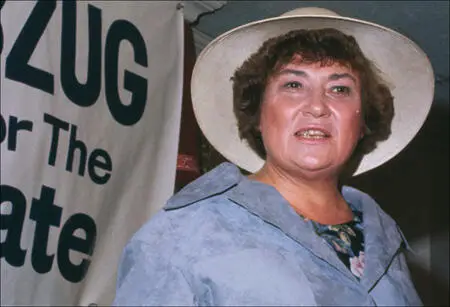
On this day on 1943 Royal Air Force create firestorm in Hamburg. Between 1940 and 1945 Bomber Command carried out 187 air raids on Hamburg. With the development of metallises strips it became much safer for the RAF to launch air attacks on Hamburg. The most intensive of these were carried out in July and August 1943 when firestorms caused the deaths of 50,000 people. As a result of these raids over a million people fled the city.
Firestorms were achieved by dropping incendiary bombs, filled with highly combustible chemicals such as magnesium, phosphorus or petroleum jelly (napalm), in clusters over a specific target. After the area caught fire, the air above the bombed area, become extremely hot and rose rapidly. Cold air then rushed in at ground level from the outside and people were sucked into the fire. The most notable examples of this tactic being used was in Hamburg (August, 1943), Dresden (February, 1945) and Tokyo (March 1945).

On this day in 1954 Mary Church Terrell died in Annapolis. Mary Church was born in Memphis, Tennessee, on 23rd September, 1863. Both her parents, Robert Church and Louisa Ayers, were both former slaves. Robert was the son of his white master, Charles Church.
During the Memphis race riots in 1866 Mary's father was shot in the head and left for dead. He survived the attack and eventually became a successful businessman. He speculated in the property market and was considered to be the wealthiest black man in the South.
Mary was an outstanding student and after graduating from Oberlin College, Ohio, in 1884, she taught at a black secondary school in Washington and at Wilberforce College in Ohio. Through her father, Mary met Frederick Douglass and Booker T. Washington. She was especially close to Douglass and worked with him on several civil rights campaigns.
After a two year travelling and studying in France, Germany, Switzerland, Italy and England (1888-1890), Mary returned to the United States where she married Robert Heberton Terrell, a lawyer who was later to become the first black municipal court judge in Washington.
In 1892 Church's friend, Tom Moss, a grocer from Memphis, was lynched by a white mob. Church and Frederick Douglass had a meeting with Benjamin Harrison concerning this case but the president was unwilling to make a public statement condemning lynching.
Church was an active member of the National American Woman Suffrage Association and was particularly concerned about ensuring the organization continued to fight for black women getting the vote. With Josephine Ruffin she formed the Federation of Afro-American Women and in 1896 she became the first president of the newly formed National Association of Colored Women.
In 1904 Church was invited to speak at the Berlin International Congress of Women. She was the only black woman at the conference and determined to make a good impression she created a sensation when she gave her speech in German, French and English.
During the First World War Church and her daughter, Phillis Terrell joined Alice Paul and Lucy Burns of the Congressional Union for Women Suffrage (CUWS) in picketing the White House. She was particularly upset when in one demonstration outside of the White House, leaders of the party asked the black suffragist, Ida Wells-Barnett, not to march with other members. It was feared that identification with black civil rights would lose the support of white women in the South. Despite pressure from people like Mary White Ovington, leaders of the CUWS refused to publicly state that she endorsed black female suffrage.
In 1909 Church joined with Mary White Ovington to form the National Association for the Advancement of Coloured People (NAACP). The first meeting of the NAACP was held on 12th February, 1909. Early members included Josephine Ruffin, Jane Addams, Inez Milholland, William Du Bois, Charles Darrow, Charles Edward Russell, Lincoln Steffens, Ray Stannard Baker, and Ida Wells-Barnett.
Church wrote several books including her autobiography, A Colored Woman in a White World (1940). In the early 1950s she was involved in the struggle against segregation in public eating places in Washington. regent.
